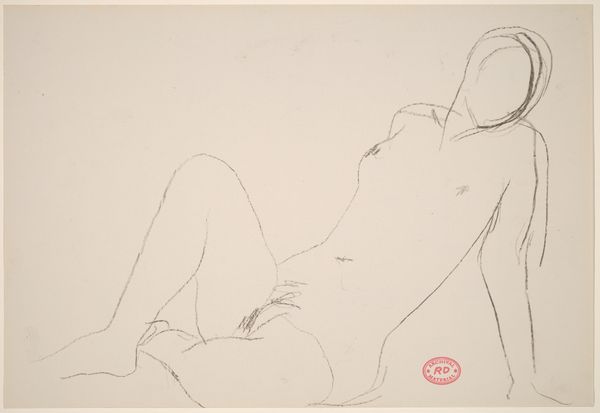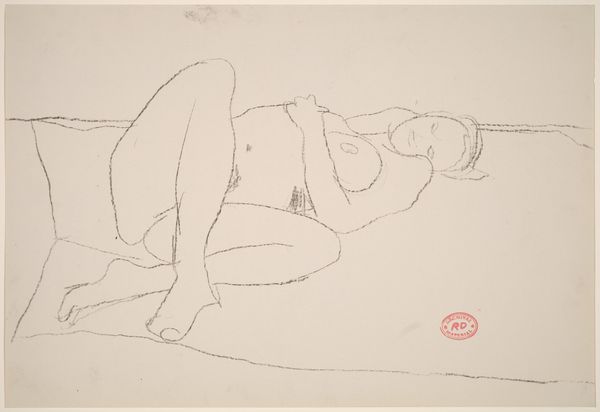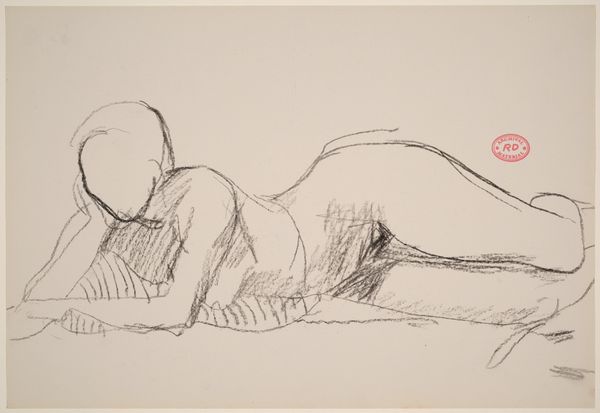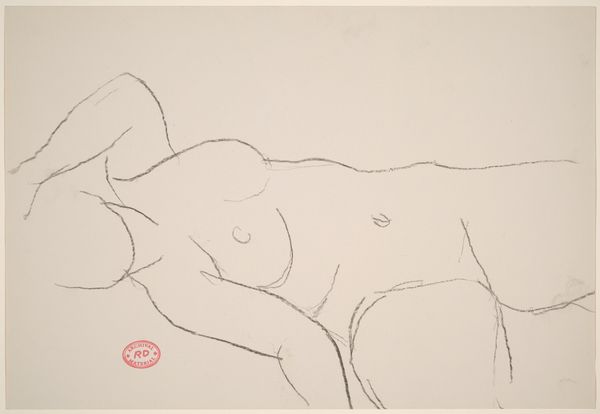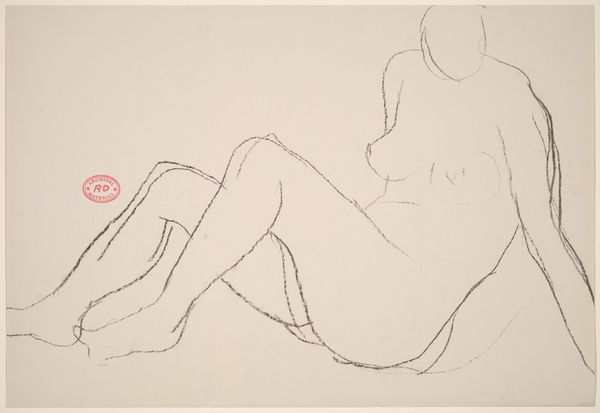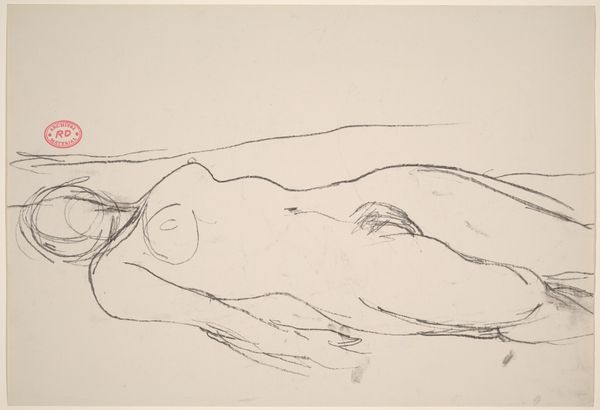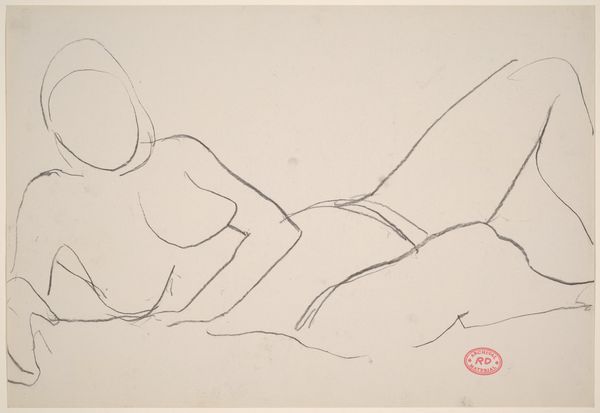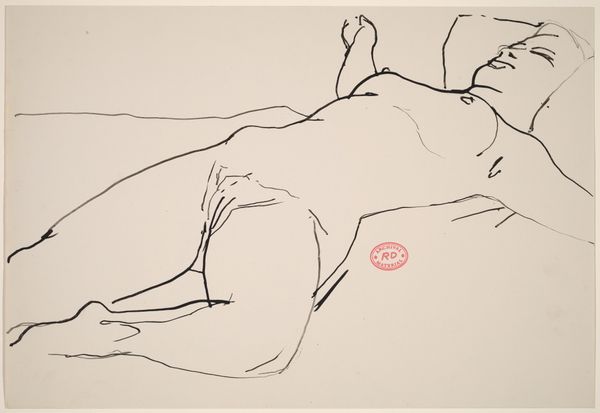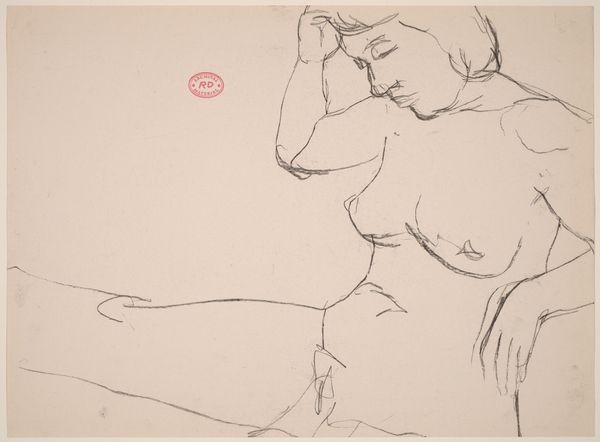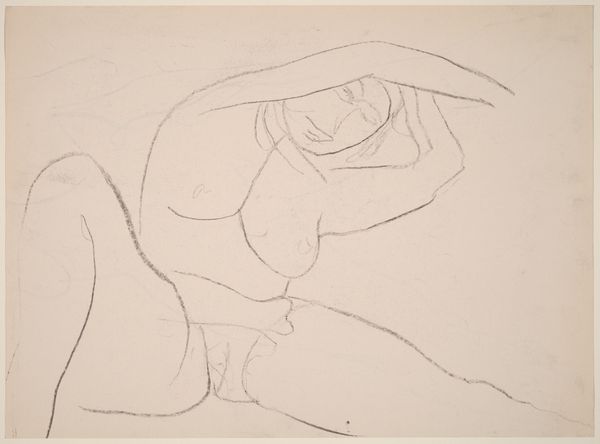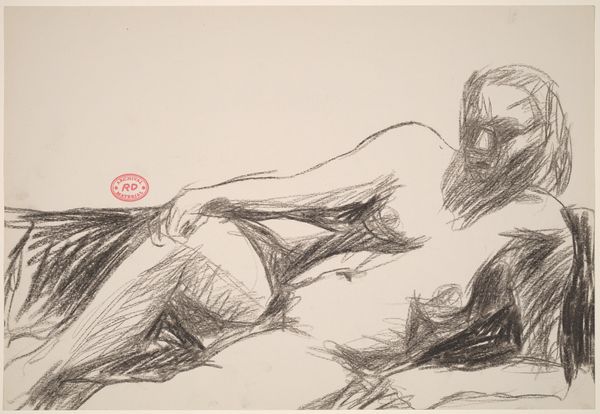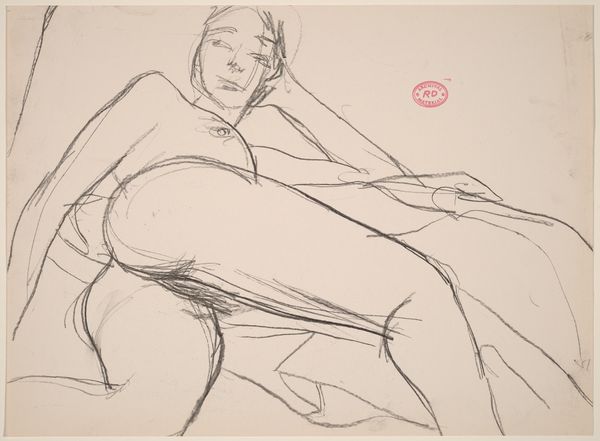![Untitled [reclining female nude seen from chest to feet] by Richard Diebenkorn](/_next/image?url=https%3A%2F%2Fd2w8kbdekdi1gv.cloudfront.net%2FeyJidWNrZXQiOiAiYXJ0ZXJhLWltYWdlcy1idWNrZXQiLCAia2V5IjogImFydHdvcmtzLzlhNjEzOTQ3LWUxYTctNGI0NS1hZWFiLWNlYjljNmZkN2EzOS85YTYxMzk0Ny1lMWE3LTRiNDUtYWVhYi1jZWI5YzZmZDdhMzlfZnVsbC5qcGciLCAiZWRpdHMiOiB7InJlc2l6ZSI6IHsid2lkdGgiOiAxOTIwLCAiaGVpZ2h0IjogMTkyMCwgImZpdCI6ICJpbnNpZGUifX19&w=3840&q=75)
Untitled [reclining female nude seen from chest to feet] 1955 - 1967
0:00
0:00
drawing, pencil
#
drawing
#
figuration
#
bay-area-figurative-movement
#
pencil drawing
#
pencil
#
line
#
academic-art
#
nude
Dimensions: sheet: 27.9 x 40.6 cm (11 x 16 in.)
Copyright: National Gallery of Art: CC0 1.0
Curator: Welcome. We’re looking at Richard Diebenkorn’s “Untitled [reclining female nude seen from chest to feet]”, a pencil drawing created sometime between 1955 and 1967. Editor: It has such a raw, immediate feel. The quick, almost scribbled lines give it a real sense of energy. The academic underpinnings contrast with the immediacy. Curator: Indeed. Diebenkorn's use of line is quite striking. Note how a minimal number of strokes convey form and volume. The composition focuses our eye on the interplay of positive and negative space around the figure, which speaks to the legacy of classical figuration through the reductive strategies of abstract expressionism. Editor: I am wondering about the process here. Given the time span, I assume these drawings might be studies for painting. There’s a visible tension between line and volume in Diebenkorn’s method; it could signal labor or underdrawing—like an unseen framework or struggle for refinement beneath what he produced, and for what ends? Curator: One could certainly explore this as an example of formalism, highlighting the interplay of line and the very suggestion of volume, as you noted, without the artifice of shading. Look closely—observe where the pencil strokes thicken, implying weight and the subtle concavities that suggest anatomical depth. The academic lineage is subtly betrayed in this strategy of rendering mass and depth with what appears like haste. Editor: Perhaps, but its effect still seems fundamentally about production, in its capacity to invite the eye and body into shared experience of its creation through the mark of the tool. Curator: A fruitful suggestion! I am also reminded of semiotics. Observe how the seemingly unfinished quality functions as a sign, an emblem of authenticity and artistic integrity—signifying an honest portrayal rather than idealized form. Editor: But this integrity comes from its ability to embody the traces of Diebenkorn’s labor! It becomes a document—a trace that exposes the complex conditions surrounding both process and form, extending far beyond the purely representational realm. Curator: This is a brilliant entry point for further interpretation. I had not previously considered labor's expression when reviewing its aesthetic character. Editor: Hopefully our exchange opens the drawing a little bit for our listeners, prompting consideration of production when taking in Diebenkorn’s works.
Comments
No comments
Be the first to comment and join the conversation on the ultimate creative platform.
